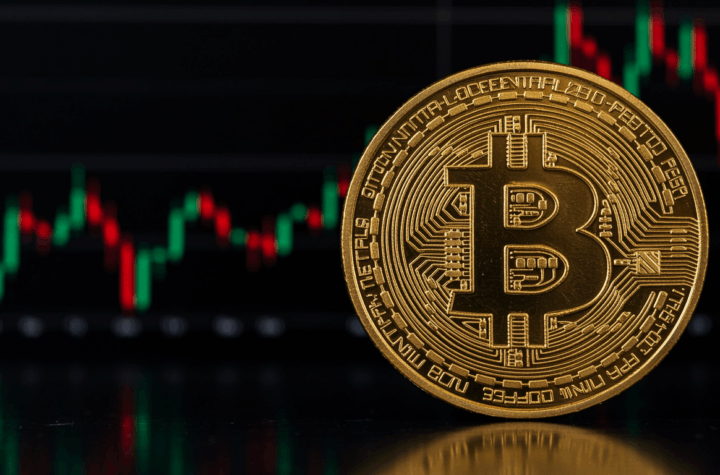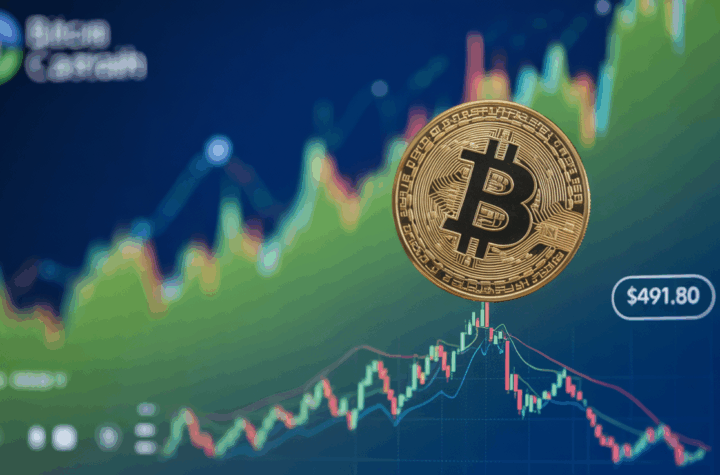
Institutional Bitcoin Buying Flows in Waves, Says Saphira’s Dyment, Even Amid Market Jitters
Despite recent volatility and mixed market signals, institutional demand for bitcoin remains firmly intact, according to Jeff Dyment, fund manager at Saphira Group.
In a note sent to CoinDesk, Dyment cautioned investors not to overinterpret temporary dips in spot demand or slower institutional buying as signs that enthusiasm is fading.
“Yes, there’s been a slowdown in large-scale purchases like those seen last December, but institutional flows come in waves rather than a steady trickle,” Dyment wrote. “Short-term swings are just ripples on a much bigger tide of institutional interest.”
Although Michael Saylor’s Strategy acquired only 16,000 BTC last month—down sharply from the record 171,000 BTC it bought in December—Dyment sees this as part of natural market cycles, not waning appetite.
Supporting his view, Dyment highlighted several key trends:
- Corporate Participation: In the first half of 2025, 51 new corporate treasuries added bitcoin to their balance sheets, matching the total number seen across 2018–2022. That’s a 375% year-over-year jump in corporate bitcoin purchases.
- Public Company Holdings: Publicly traded firms collectively hold 848,902 BTC, about 4% of bitcoin’s total supply, after adding 131,000 BTC in Q2 2025 alone.
- ETF Growth: BlackRock’s IBIT ETF has become the largest ETF globally, holding 699,000 BTC—or over 3.3% of bitcoin’s supply. Altogether, U.S. spot bitcoin ETFs now manage roughly 1.25 million BTC, accounting for 6% of the total supply, just 18 months after launching.
Further evidence of institutional confidence appears in the options markets. Singapore-based QCP Capital noted that whales have been actively positioning for higher prices, buying September $130,000 BTC calls and holding spreads between $115,000 and $140,000.
“Volatility remains low for now, but a decisive move above $110,000 could spark fresh demand for options,” QCP wrote in a Monday note.
While some skeptics point to lower spot flows and declining mempool activity as warning signs, Dyment insists these are temporary dips in an otherwise strong institutional adoption trend. “Wall Street has enormous capital waiting for the right moment to enter,” he said.
BTQ Unveils Quantum-Safe Stablecoin Infrastructure
Meanwhile, the stablecoin space is seeing its own technological evolution. BTQ Technologies announced Monday the launch of its Quantum Stablecoin Settlement Network (QSSN), designed to protect stablecoins from the future risks of quantum computing.
BTQ says its new framework could support quantum-secure versions of major stablecoin architectures, including proposals like JPMorgan’s USD deposit token (JPMD). The QSSN uses dual signatures—combining traditional ECDSA and Falcon-512 post-quantum cryptography—to secure processes like minting and burning while ensuring compatibility with current token standards and wallets.
The move comes as the stablecoin market surpasses $225 billion in size, and lawmakers increasingly focus on cybersecurity requirements.
The GENIUS Act, currently advancing through the U.S. Congress, seeks to set federal standards for fiat-backed stablecoins and encourages adoption of quantum-resistant cryptographic measures.
BTQ, which has partnered with the National Institute of Standards and Technology (NIST) for over a decade, hopes QSSN will become a backbone for future regulatory and technological frameworks.
Market Recap
- Bitcoin (BTC): BTC fell 1.02% between July 6 at 22:00 UTC and July 7 at 21:00 UTC, briefly dropping to $107,519.64 amid heavy selling before bouncing sharply off support around $107,800. On-chain data shows strong buying zones between $106,738 and $98,566, collectively held by 1.68 million addresses, according to CoinDesk Research’s technical analysis bot.
- Ethereum (ETH): ETH rose 1.67% in a choppy session, swinging nearly 3% between $2,529 and $2,604. The $2,530 support level held firm as institutional inflows surpassed $1.1 billion, driving volume spikes during both rallies and pullbacks.
- Gold: Gold initially fell as the U.S. dollar strengthened but rebounded on safe-haven buying driven by new tariff threats. Central bank purchases and global de-dollarization continue to support predictions of prices potentially reaching $4,000.
- S&P 500: U.S. stocks dropped Monday as former President Donald Trump announced new tariffs on imports from seven countries, sending the S&P 500 lower by 0.79% to close at 6,229.98.
- Nikkei 225: Asia-Pacific markets showed resilience despite geopolitical uncertainty, with Japan’s Nikkei 225 rising 0.36% as Trump proposed tariffs of up to 40% on goods from South Korea, Indonesia, and Thailand.






More Stories
“Dogecoin steadies near $0.16 support amid profit‑taking that caps upside momentum.”
RLUSD Pilot Boosts XRP 5%, Technical Momentum Points to $2.50
How Aggressively Are BTC Traders Hedging After Recent Dip Under $100K?